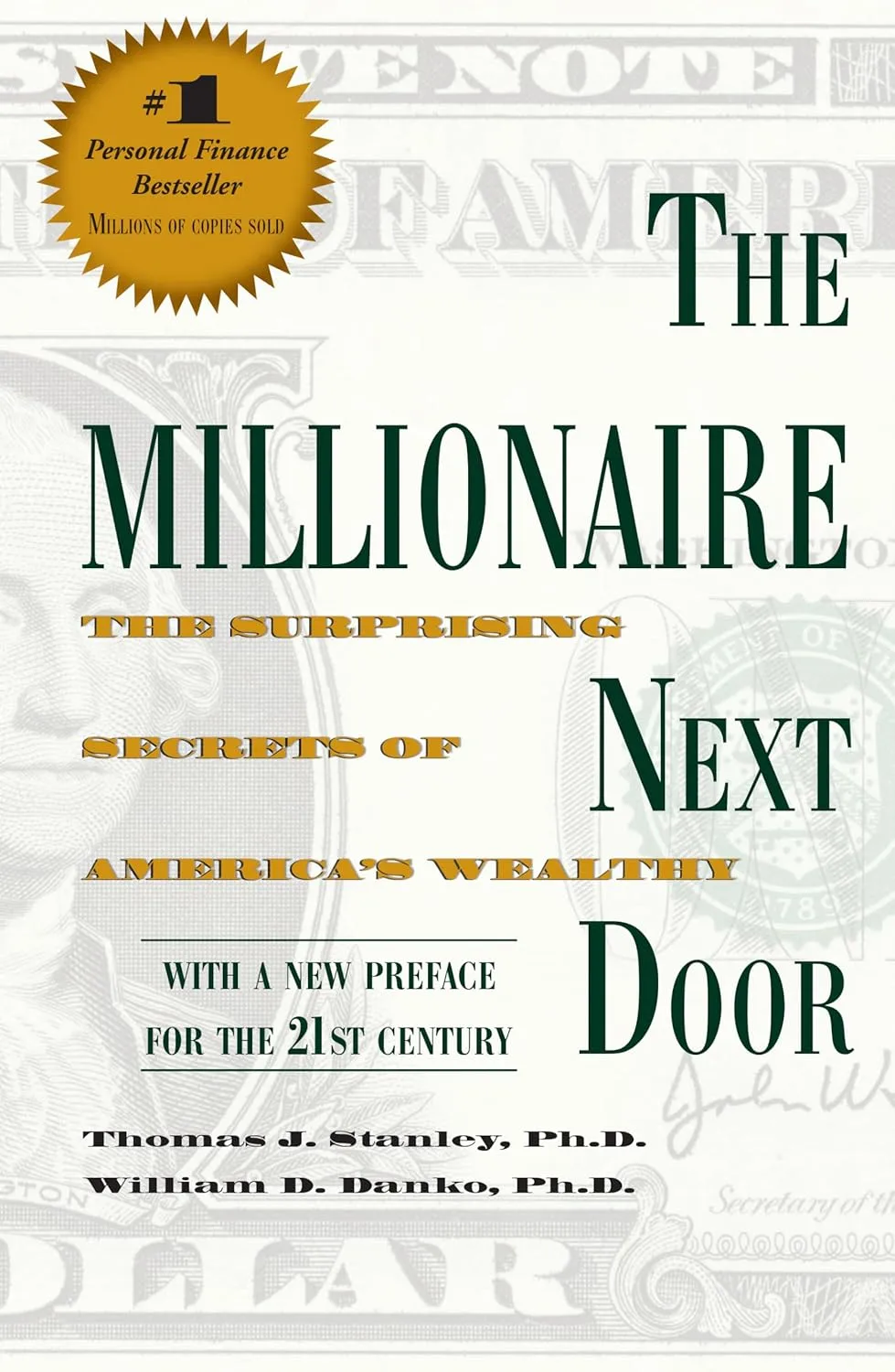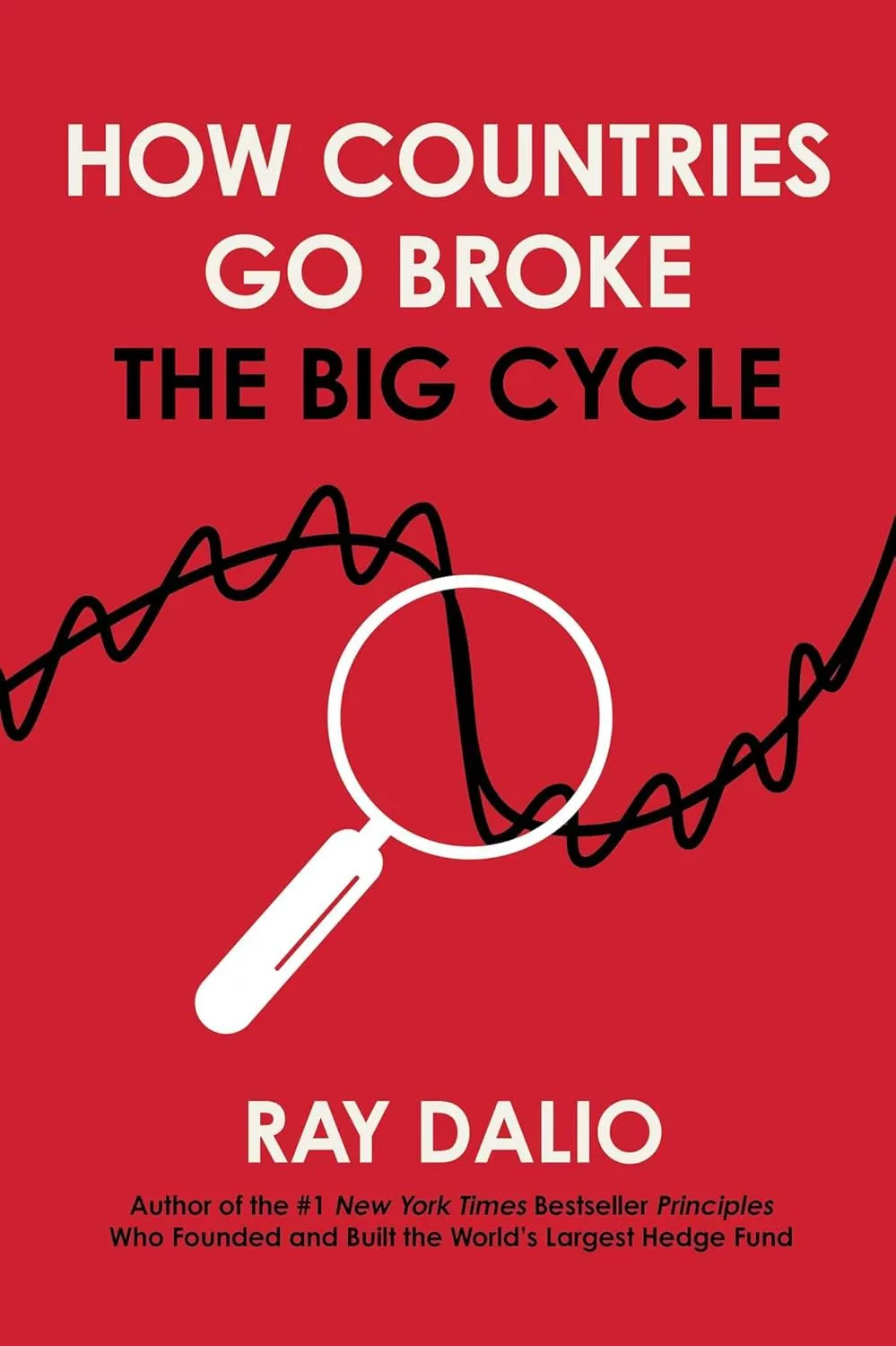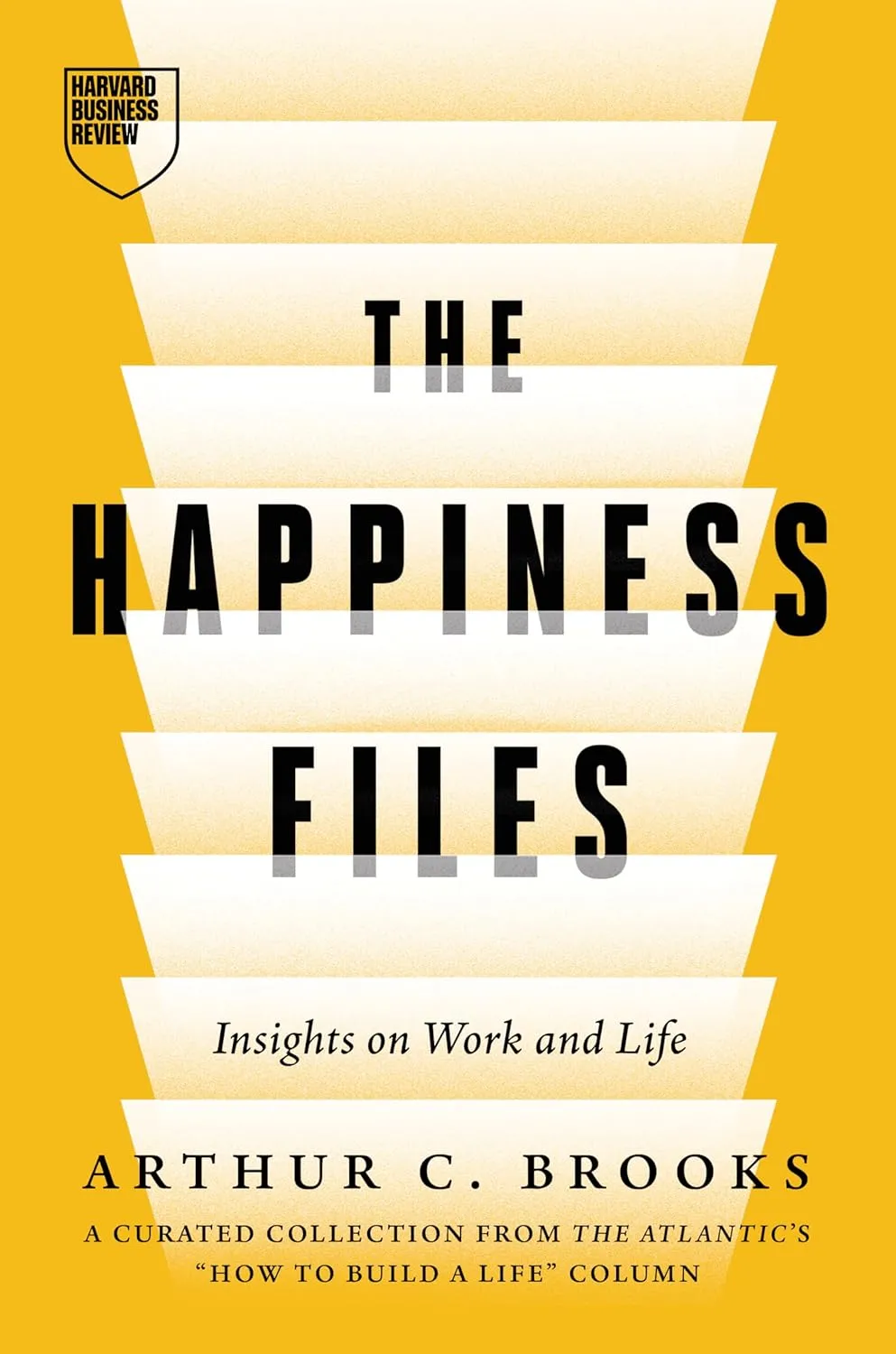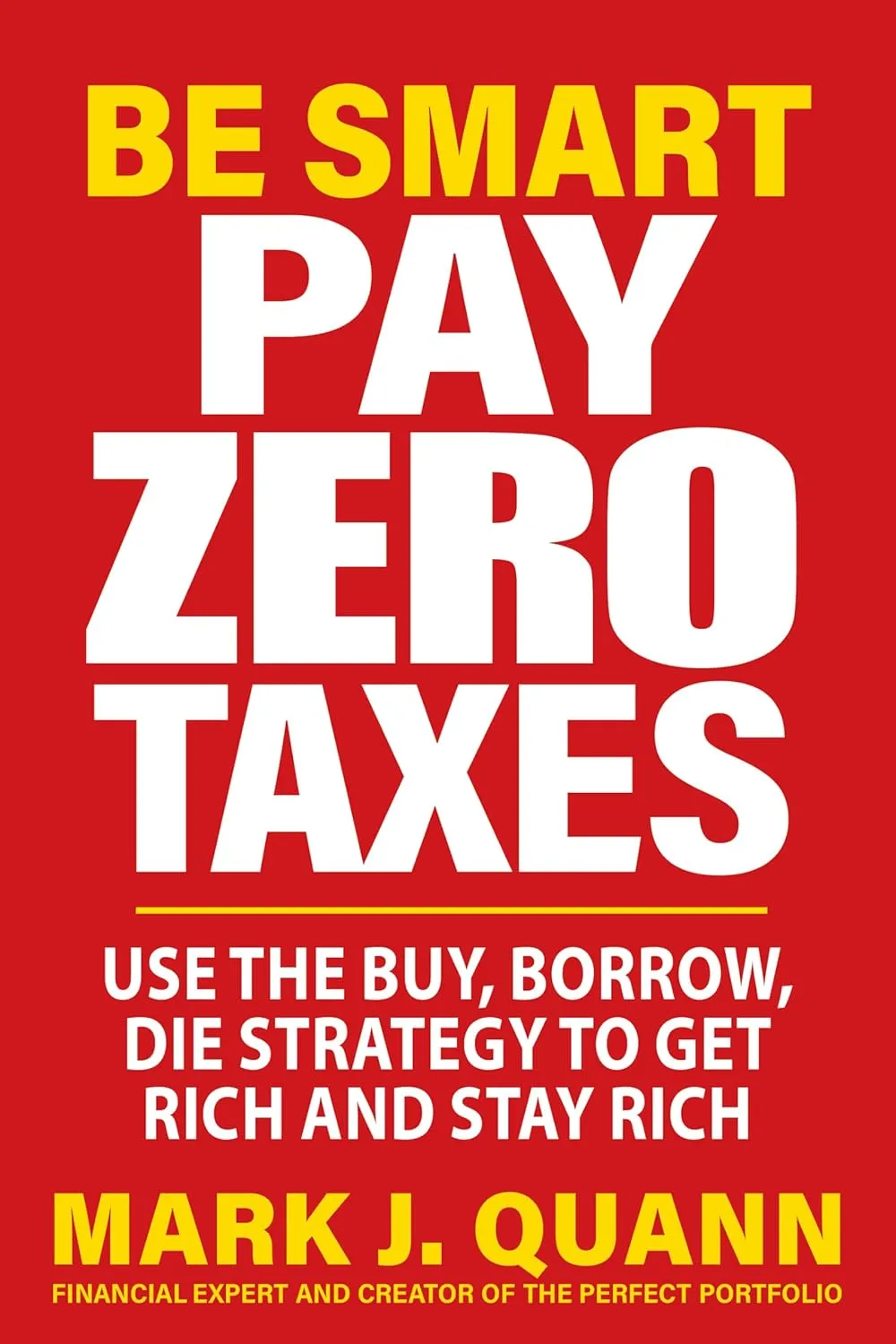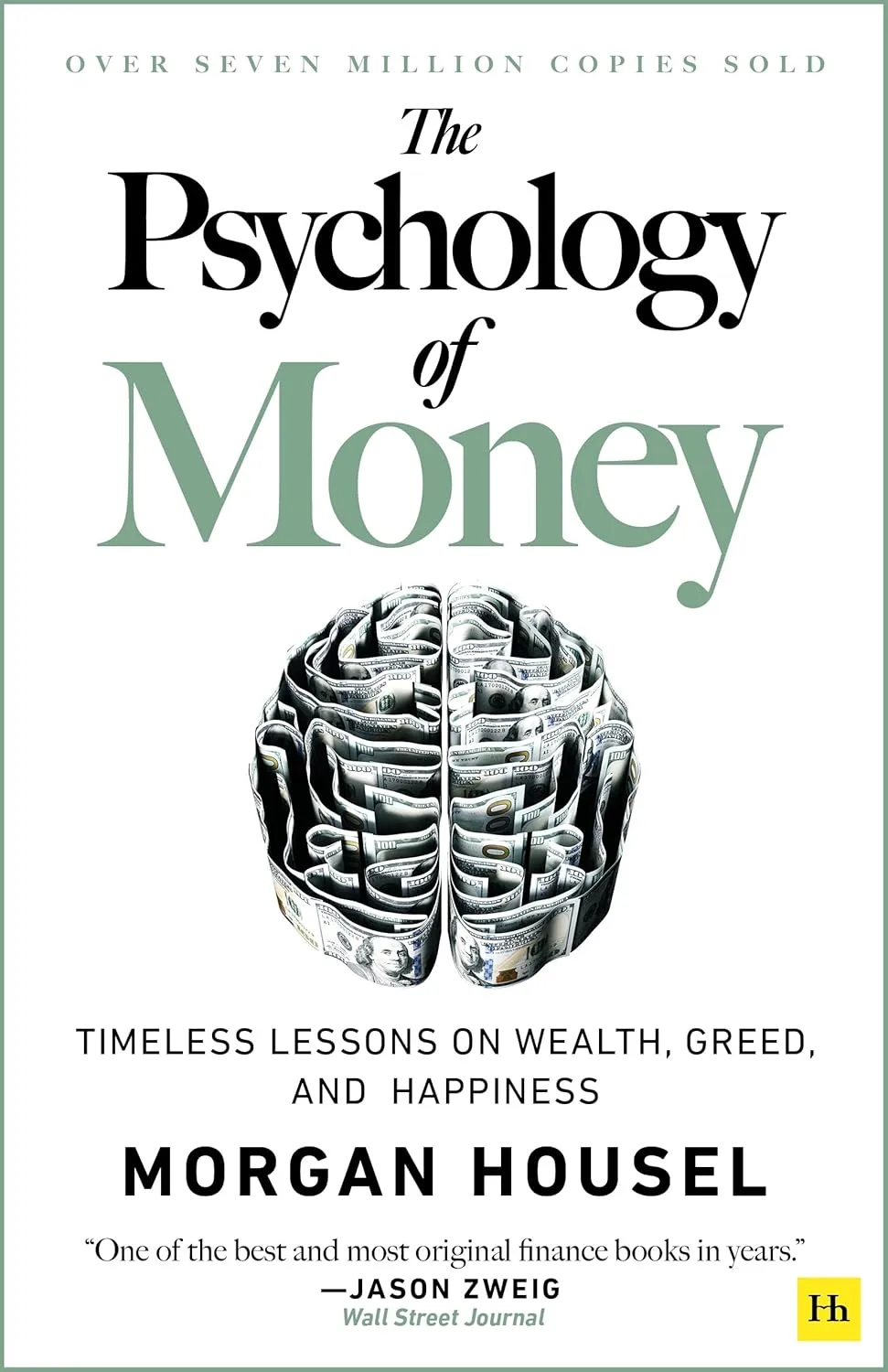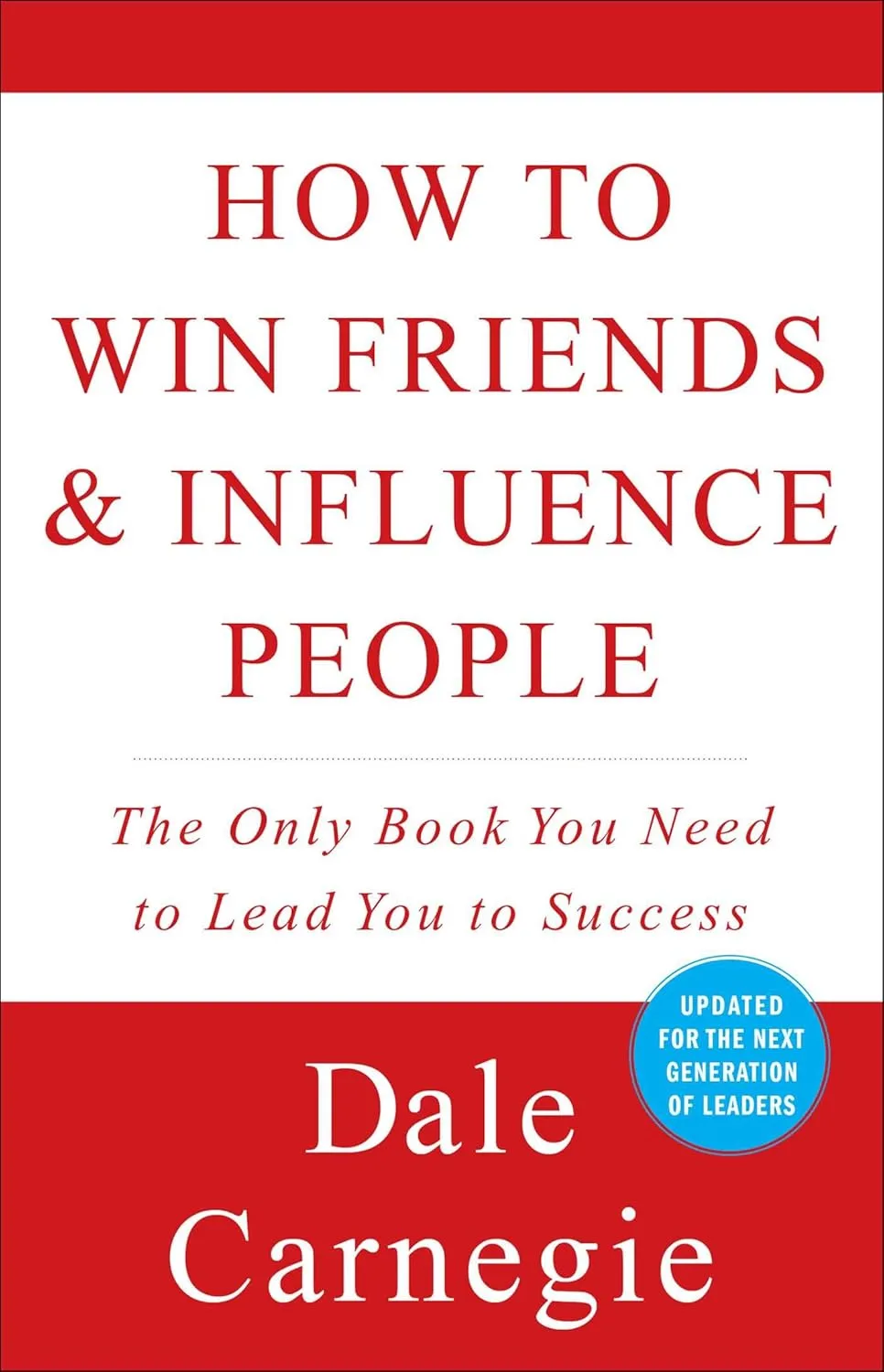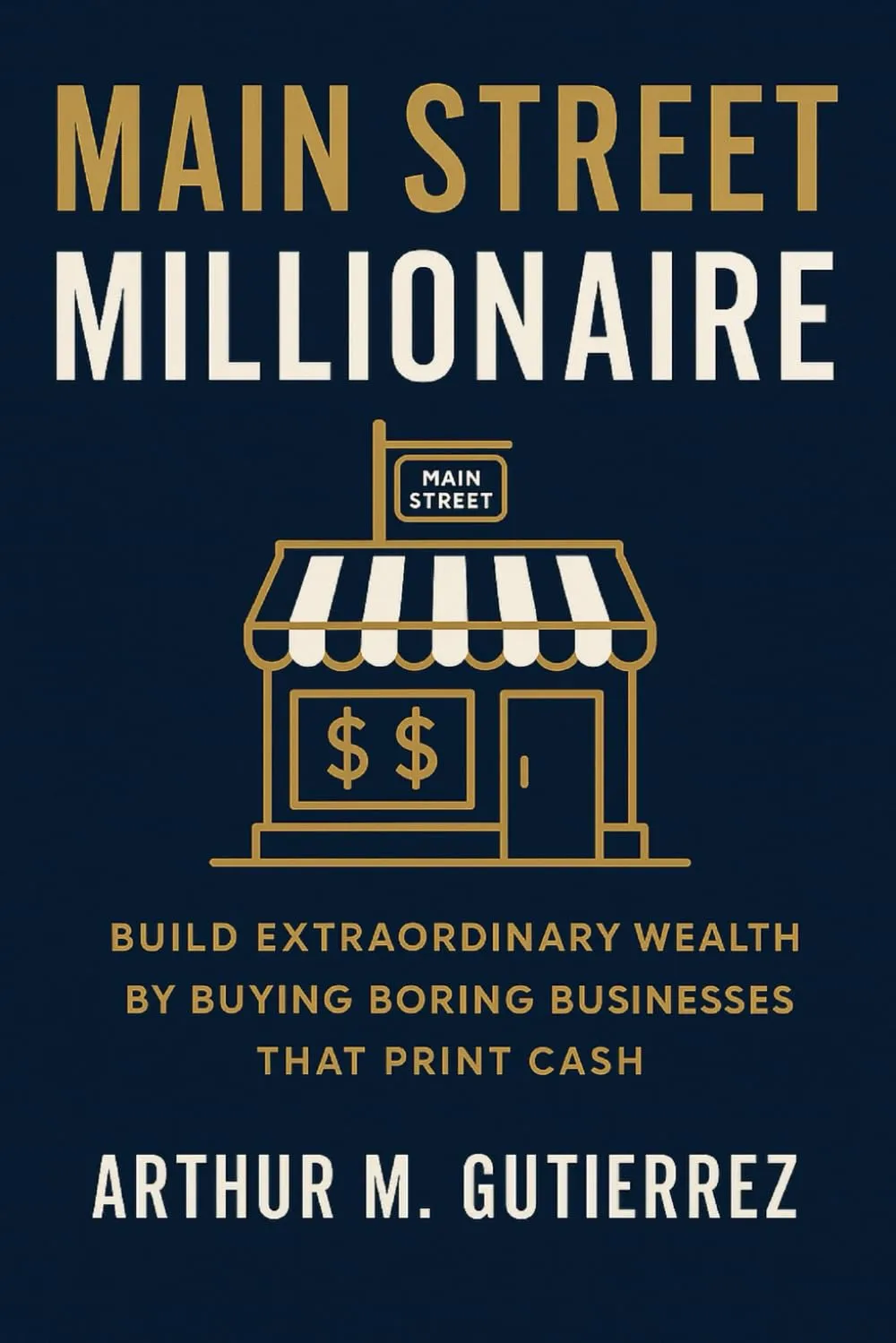Overview
“The Millionaire Next Door” by Thomas J. Stanley and William D. Danko is a groundbreaking study that shatters common misconceptions about wealth in America. Based on decades of research and interviews with over 1,000 millionaires, the authors reveal that most wealthy Americans are not flashy spenders living in mansions, but rather ordinary people who have accumulated wealth through disciplined saving, frugal living, and smart financial decisions. The book’s central thesis is that true wealth is built through consistent, unglamorous financial habits rather than high income alone.
Key Takeaways
| Key Insight | Description |
|---|---|
| Wealth vs. Income | High income doesn’t guarantee wealth; many high earners are “under-accumulators” due to lifestyle inflation |
| Frugality First | Millionaires live below their means, often driving used cars and shopping at discount stores |
| Self-Employment Advantage | Business owners have four times the likelihood of becoming millionaires compared to employees |
| Financial Independence | True wealth means being able to maintain your lifestyle without working |
| Invisible Wealth | Most millionaires don’t look wealthy and avoid conspicuous consumption |
| Education Investment | Wealthy families prioritize financial education and economic self-sufficiency for their children |
| Time Over Money | Millionaires focus on building assets rather than increasing spending |
Book Structure
The book is organized into eight comprehensive chapters that build upon each other:
Chapter 1: Meet the Millionaire Next Door – Introduces the surprising profile of typical American millionaires and challenges stereotypes about wealth.
Chapter 2: Frugal Frugal Frugal – Explores how millionaires maintain modest lifestyles despite their wealth, focusing on practical frugality.
Chapter 3: Time, Energy, and Money – Examines how wealthy individuals allocate their time and energy to wealth-building activities.
Chapter 4: You Aren’t What You Drive – Debunks the myth that expensive cars indicate wealth, revealing millionaires’ practical vehicle choices.
Chapter 5: Economic Outpatient Care – Discusses how financial gifts to adult children can actually hinder their wealth-building potential.
Chapter 6: Affirmative Action, Family Style – Analyzes how wealthy families educate their children about money and business.
Chapter 7: Find Your Niche – Explores how many millionaires build wealth by serving the affluent market.
Chapter 8: Jobs: Millionaires versus Heirs – Compares self-made millionaires with inherited wealth recipients.
About the Authors
Thomas J. Stanley was a renowned researcher and author who dedicated his career to studying the wealthy. He held a doctorate in business administration and was a professor at Georgia State University. Stanley conducted extensive research on millionaires for over 30 years, making him America’s foremost authority on the subject.
William D. Danko is a professor of marketing at the University at Albany, State University of New York. He specializes in consumer behavior and has co-authored several studies on wealth accumulation patterns in America.
Together, they spent over 20 years researching and interviewing wealthy individuals, creating the most comprehensive study of American millionaires ever conducted.
Why This Book Resonates
“The Millionaire Next Door” continues to resonate with readers because it offers hope and practical guidance to ordinary people. The book democratizes wealth-building by showing that you don’t need to be born wealthy, have an extremely high income, or make risky investments to become a millionaire. Instead, it proves that consistent, disciplined financial habits can lead to substantial wealth over time.
The research-based approach provides credibility, while the accessible writing style makes complex financial concepts understandable. In an era of social media wealth displays and lifestyle inflation, the book’s message about the power of frugality and delayed gratification remains refreshingly counter-cultural and deeply relevant.
Ideal Audience
This book is perfect for:
- Middle-class professionals who want to build wealth on a moderate income
- Young adults starting their careers who want to establish good financial habits early
- Business owners and entrepreneurs seeking validation and strategies for wealth building
- Parents who want to teach their children about money and financial responsibility
- Anyone who feels discouraged about their financial prospects and needs motivation
- Financial advisors and coaches who want to understand wealth-building psychology
- People approaching retirement who want to ensure their financial security
Memorable Quote
“Wealth is not the same as income. If you make a good income each year and spend it all, you are not getting wealthier. You are just living high. Wealth is what you accumulate, not what you spend.”
Central Themes
| Theme | Key Points |
|---|---|
| Millionaire Mindset | Focus on net worth over income, long-term thinking, and financial discipline |
| Frugal Living | Living below means, avoiding lifestyle inflation, and making practical spending decisions |
| Self-Reliance | Building wealth through self-employment, taking calculated risks, and avoiding financial dependence |
| Family Wealth Dynamics | Teaching children financial responsibility and avoiding economic outpatient care |
| Asset Accumulation | Prioritizing investments and savings over consumption and status symbols |
| Work-Life Integration | Viewing work as a means to build wealth rather than just earn income |
| Market Opportunities | Finding profitable niches and serving affluent markets |
FAQ
Q: Do you need a high income to become a millionaire? A: No. The book shows that many people with moderate incomes become millionaires through frugal living and consistent saving, while many high earners never build substantial wealth due to overspending.
Q: How long does it take to become a millionaire using these principles? A: The timeline varies, but the book suggests that with consistent saving and investing, middle-class earners can achieve millionaire status in 15-30 years, depending on their income and expenses.
Q: Are the book’s findings still relevant today? A: Yes, the core principles of frugal living, consistent saving, and avoiding lifestyle inflation remain timeless, though specific investment strategies may need updating for current markets.
Q: What’s the difference between “prodigious accumulators of wealth” (PAWs) and “under-accumulators of wealth” (UAWs)? A: PAWs are people who have accumulated significant wealth relative to their income through disciplined financial habits, while UAWs have lower net worth despite higher incomes due to overspending.
Q: Should wealthy parents give money to their adult children? A: The book suggests that regular financial gifts can create dependency and reduce children’s motivation to build their own wealth, though strategic gifts for education or business investments may be beneficial.
Final Thoughts
“The Millionaire Next Door” fundamentally changed how Americans think about wealth. Its evidence-based approach proves that becoming a millionaire is achievable for ordinary people willing to live below their means and invest consistently over time. The book’s enduring popularity stems from its empowering message: you don’t need to win the lottery or inherit money to build substantial wealth.
The most powerful lesson is that wealth building is more about behavior than income. By adopting the mindset and habits of millionaires – frugality, long-term thinking, and focus on net worth rather than income – readers can take control of their financial futures regardless of their starting point.
For anyone serious about building wealth, this book provides both the motivation and the roadmap. It’s not about getting rich quick, but about getting rich slowly and surely through proven principles that have worked for millions of Americans.

